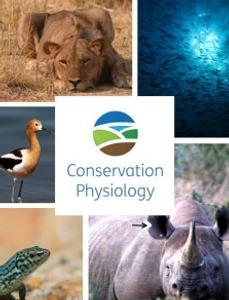Conservation Physiology
Editor-in-Chief: Andrea Fuller, University of the Witwatersrand, South Africa
Scope
Key topics covered by the journal include:
- Understanding the influence of anthropogenic disturbance, and of variation in habitat quality, on organism condition, health and survival
- Providing a mechanistic/functional understanding of the effect of anthropogenic environmental change on organisms; the use of physiological knowledge to develop mechanistic models for species distributions
- Evaluating stress responsiveness and environmental tolerances relative to environmental change (including global warming and ocean acidification)
- Understanding the adaptation of physiological processes to environmental variation (e.g. studies on thermal adaptation among populations)
- Understanding the optimal environmental conditions for ex-situ preservation of endangered species (captive breeding, seed bank protocols for storage and regeneration, tissue culture for plant species or genotypes that are difficult to regenerate from seeds)
- Understanding the ecology and evolution of physiological diversity and its relevance to conservation
- Exploiting knowledge on organismal physiology to control invasive species and restore threatened habitats and populations
- Developing mechanistic relationships between population declines and physiological processes
- Developing of predictive models in conservation practices that include physiological parameters
- Applying physiological biomarkers as part of long-term environmental monitoring programs
- Integrating physiological knowledge into ecosystem management and into tools to solve complex conservation problems
- Understanding the policy implications and application of knowledge arising from conservation physiology research
- Understanding the physiological mechanisms involved in changes in community structure, as well as individual species, in response to environmental change
- Applications of contemporary genomic and post-genomic technologies to conservation physiology
- Integration of physiology with conservation behaviour, conservation medicine, and conservation genetics
- Papers reporting references ranges will only be considered if they also present their application
Key Details
Publisher: Oxford University Press (OUP)
Owners: SEB, OUP
Publishing model: Online-only, open access
Peer-review model: Single-anonymous
Benefits of publishing
- Excellent support and customer service provided by the Con Phys editorial office
- Supportive of Early Career Researchers (presentation opportunities at SEB seminars, access to SEB training sessions, reviewing opportunities)
- Expert, field-defining Editorial Board
- Joint owned by the SEB and OUP, all SEB profits are reinvested into the community
- Committed to open and inclusive science
- Many authors will have their open access charges covered under a Read & Publish deal with our publisher.
- Committed to high standards of ethics in publishing (a member of COPE)
2023 metrics
- Journal Impact factor: 2.6 (rank 20/74 in ‘Biodiversity Conservation’ category)
- Journal Citation Indicator: 0.73 (rank 24/74 in ‘Biodiversity Conservation’ category)
- CiteScore: 5.1 (rank 46/211 in ‘Nature & Landscape Conservation’ category)
- Output: 108 papers
- Visits with Content Engagement: 198,000
- Acceptance rate: 85%
- Turnaround time: 55 days (median, submission to first decision, all papers)
- Indexed in Web of Science, Scopus, Google Scholar, PubMed
Types of articles
Research articles, Reviews, Toolbox (methods), Conservation Physiology in Action, Voices in Conservation Physiology, Perspectives, Comments, Editorials
Links to important webpages
Journal homepage: https://academic.oup.com/conphys
Reasons to submit: https://academic.oup.com/conphys/pages/why-publish-your-research-in-conservation-physiology
Editorial board: https://academic.oup.com/conphys/pages/Editorial_Board
About: https://academic.oup.com/conphys/pages/About
Submission site: https://mc.manuscriptcentral.com/conphys
Latest issue: https://academic.oup.com/conphys/issue
Con Phys on Twitter: https://twitter.com/conphysjournal
Contact
Support for the journal is provided through the SEB’s editorial office: [email protected]

